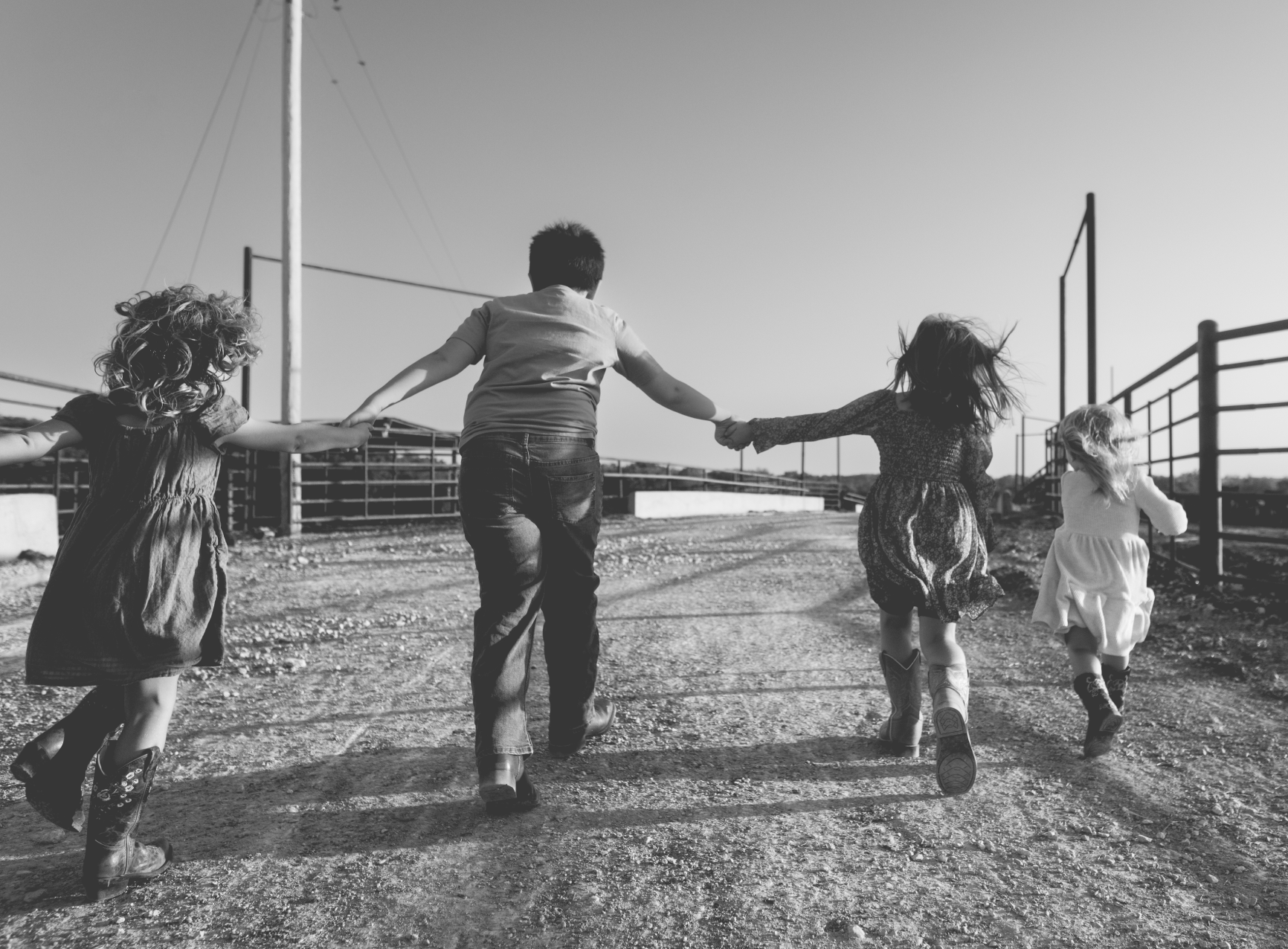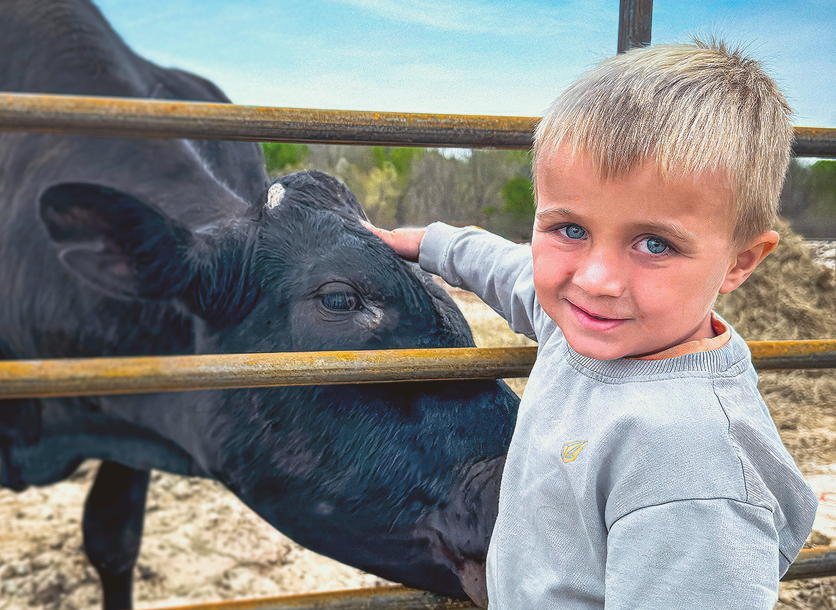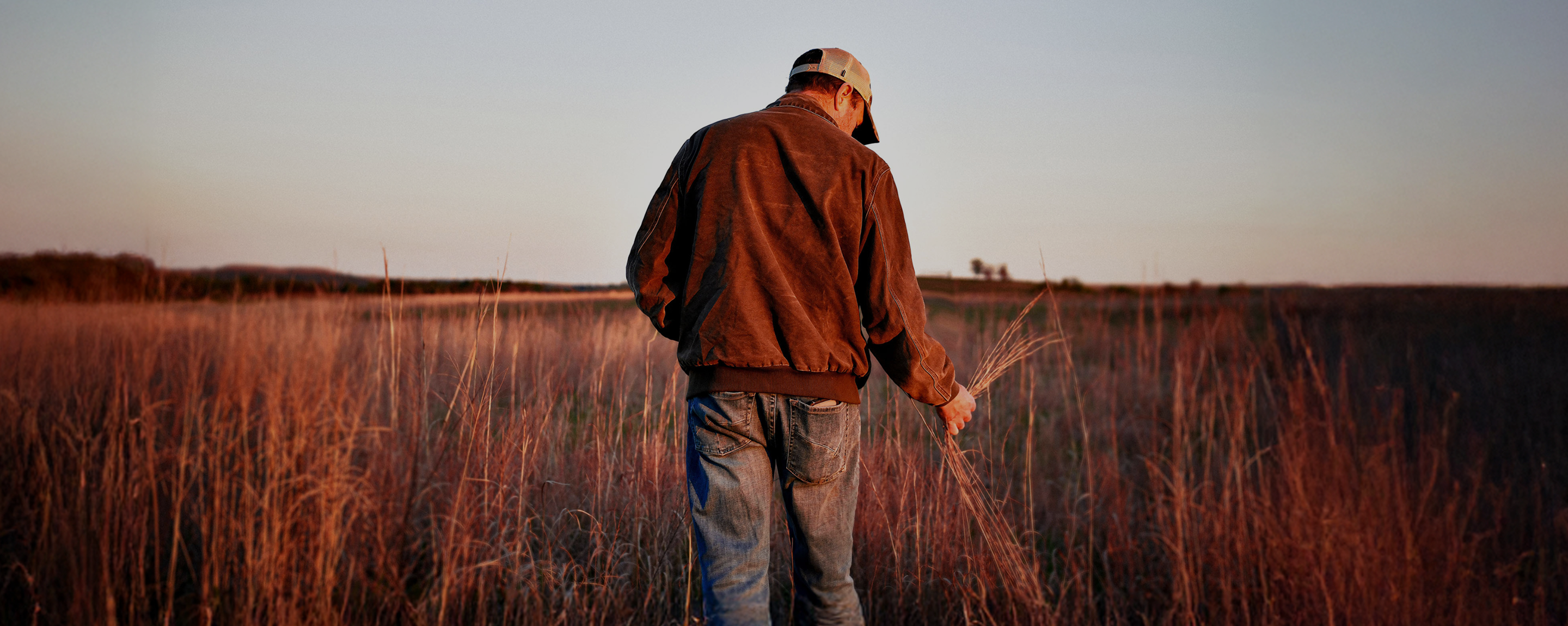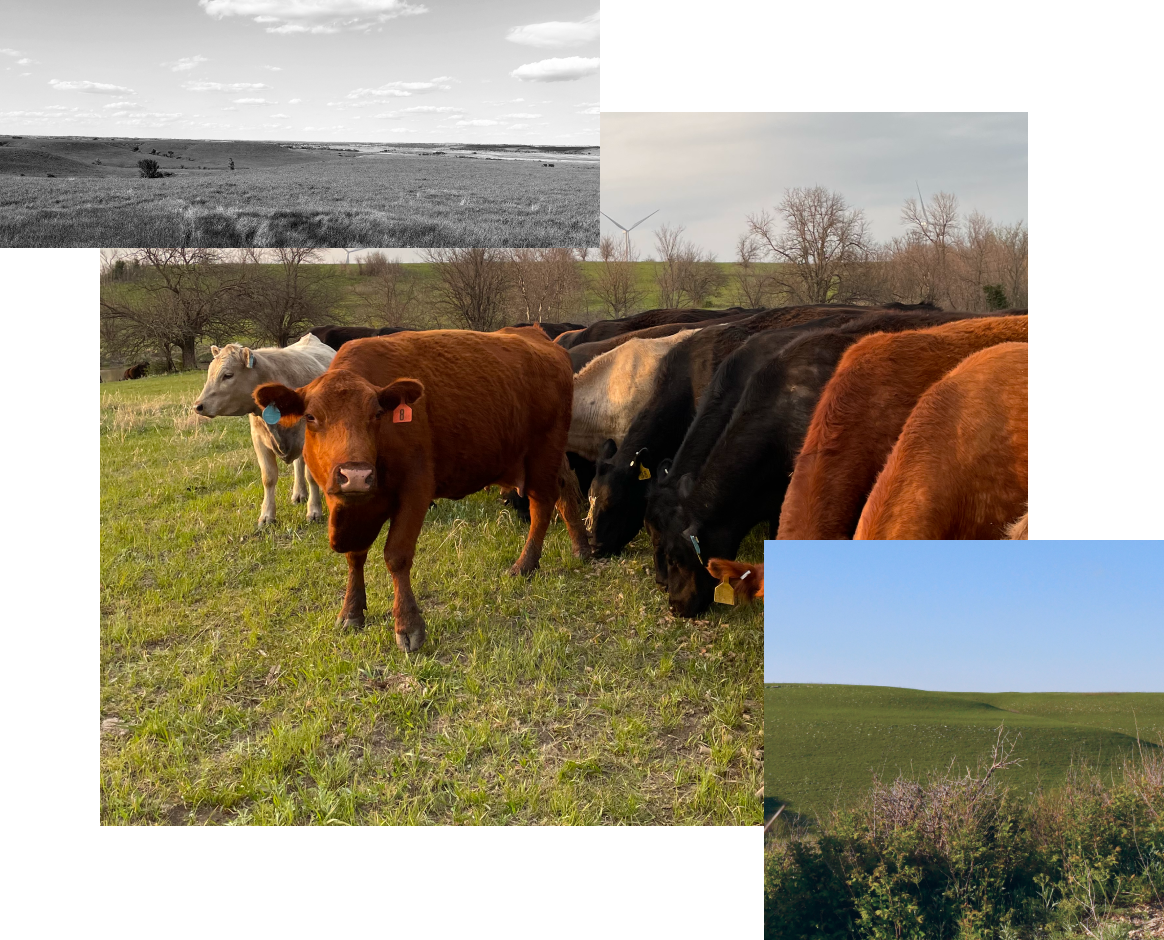
Firegrass was born in the Heartland, first in spirit, then in soil with the steady rhythm of everyday work.
Our family-owned ranch is the pride of generations. Farmers, ranchers, and meat processors. Pioneers who lived by the seasons, passing down the wisdom of the land and the quiet values that its caretaking demands.
Complementing our legacy is the prized genetic lineage of our Wagyu cattle tracing back to Japan. Their noble heritage finds new expression here in the Flint Hills, where nutrient-rich grasslands and abundant water produce beef with extraordinary character: lush marbling, remarkable tenderness, and rich, buttery flavor that lingers.

Our Principles
We raise our cattle with care, experience, and a deep understanding that comes from working alongside nature, not above it. Because at Firegrass, we are called to be more than just caretakers of this land and these cattle. We are called to be keepers of promises.
Promises to the earth, which we treat with regenerative respect. Promises to our animals, raised humanely without exception. And promises to those we feed, that excellence begins long before the plate.
At Firegrass, we believe that our land stewardship, humane animal care, and noble genetics are key to producing uniquely superior Wagyu beef for an authentically better taste experience in the natural world of gourmet.
ROOTED IN RENEWAL
Our Regenerative Principles
Regenerative cattle farming is about working with nature to restore and enrich the land, not just sustain it. We focus on building healthy, living soil — the foundation of all life. Our cattle graze as nature intended, moving freely across lush, diverse pastures in carefully guided rotations that mirror the patterns of the wild. We allow pastures to rest, regrow, and strengthen, creating nutrient-rich grasses that support both the herd and the ecosystem. This harmony between herd and habitat builds vibrant, living soil: soil that captures carbon, retains water, and breathes life back into the ecosystem. The result is a landscape that thrives, and beef that embodies the richness of its origin. Deeply flavorful, nutrient-dense, and authentically raised.
We not only practice what we preach on our grasslands, we extend it to every area of our operation. We graze our cattle on our farmlands, returning ruminants to our lands, which have long been missing since the eradication of the bison. We plant cover crops, not only to improve the quality of feed, but to reduce erosion, reduce chemical usage, but also to improve the water quality that leaves our farms. We practice no-till farming to not only reduce erosion, but to preserve our greatest resource, our soil. We manage these resources for the long term, not because it’s easy, but because it’s what’s right.
At its heart, regenerative farming and agriculture practices are acts of stewardship. Every decision we make is guided by the goal of leaving the land better than we found it: fertile, balanced, and thriving for generations to come.
ROLL OVER EACH ITEM TO LEARN MORE
Healthy Soil
LIFE BEGINS BELOW GROUND.
Holistic Grazing
Move like nature intended.
Promoting Biodiversity
Many species, one system.
Water Cycle Restoration
Soil that soaks it in.
Carbon Sequestration
Farming that captures carbon.
Animal Well-Being
Happy cattle, healthy land.
Land Stewardship
Farming for the future.
Meet Our Team

CO-FOUNDER
Mike Tilley,
Mike was born into the rhythms of rural life in Frankfort, Kansas, where his family has lived and worked the land for six generations. His grandfather, Jack Welch was a locker-plant owner, meat processor, grocer, and community fixture who taught him the values of hard work, honesty up front, and the satisfaction of doing things right the first time. Mike started working in his grandad’s plant at just eight years old, learning alongside his personal hero and spending time together hunting, fishing, and pitching in on local ranches.
Mike’s path led him to medicine, earning a biology degree from Kansas State University, followed by medical school at the University of Kansas, and advanced surgical training at the University of Minnesota. A respected orthopedic trauma surgeon, Mike never lost his connection to the land or his passion for the pasture. He’s an avid cook and lifelong lover of beef, raised as he was in steak country. The first time he tasted Wagyu, he called it, “The best bite of beef ever, unlike anything I’ve had.” That single bite set off a chain of curiosity and enthusiasm that ultimately led to the launch of Firegrass.
What began as a plan to raise a few cattle for his own table quickly became a full-fledged, large-scale Wagyu operation in 2021. With a mind built for science and a heart tethered to the prairie, Mike brings deep expertise in genetics, a hands-on love for ranching, and a vision rooted in sustainability, stewardship, and uncompromising quality.
He didn’t have to do this, but he was made for it.

CO-FOUNDER
Trey Ruetti,
Trey grew up in the fields of Marshall County, Kansas, on land his family has tended for more than a century. From the moment he could walk, his hands were in the dirt — learning, helping, and growing alongside generations of stewards who came before him. His first real taste of responsibility came through a 4-H bottle calf, a gift from his grandfather Richard, the man Trey still calls his greatest champion. What began as a childhood pastime quickly became a lifelong calling.
Every spare moment was spent on the farm, working side by side with his father, Rich. Those days instilled in Trey not only the rhythms of farm life but also a deep understanding of sustainability, how caring for the land and animals creates a legacy that endures.
After earning his degree in Agricultural Economics from Kansas State University, Trey and his wife, Lexie, returned home to carry forward the family’s five-generation farm. In 2018, Trey’s relentless curiosity led him down a new path: Wagyu. Countless hours of research and experimentation culminated in breeding his first four heifers to a Wagyu bull, an experiment that would soon shape the future of the farm.
When 2020 tested the resilience of the food system, Trey felt a profound call to action: to feed his community with integrity and intention. From that moment, Firegrass was born. A reflection of Trey and Lexie’s shared devotion to good cattle, honest food, and a way of farming that gives back more than it takes.
Today, they bring their boots-on-the-ground experience and unwavering passion for regenerative agriculture to every cut of beef they share. Rooted in heritage, driven by curiosity, and guided by a belief that better beef begins with better land.
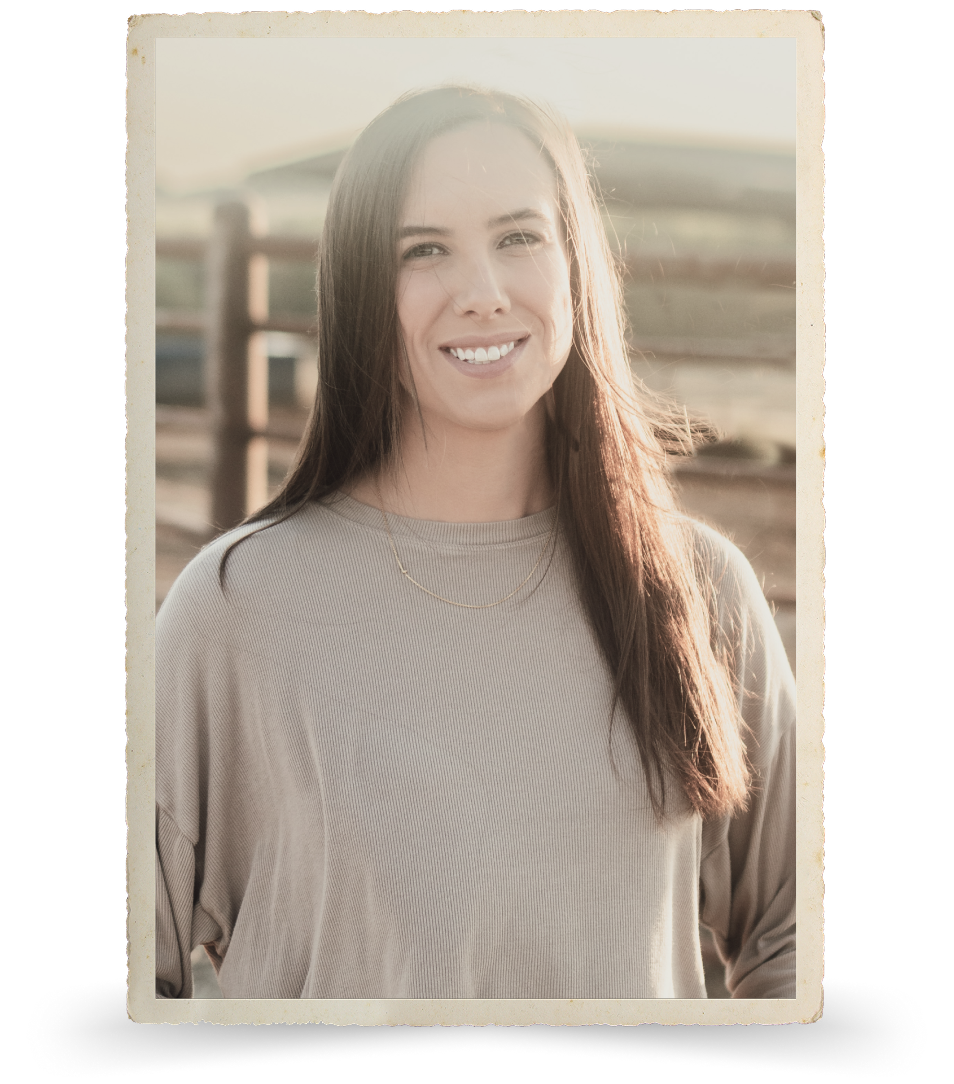
CO-FOUNDER
Lexie Ruetti,
Lexie was born and raised on the shortgrass prairies of northwest Kansas, near Hoxie. Where wind, wide skies, and hard work shape the people as much as the land itself. She spent her childhood side by side with her father, Steve, helping tend their cow herd on the family’s seventh-generation farm. From long days riding along in the truck to quiet moments leaning against the rails of a cattle pen, Lexie learned life’s most enduring lessons at her father’s side. To this day, she considers him her greatest teacher and most trusted advisor.
Growing up, Lexie witnessed the power and perseverance of women in agriculture. Women who worked shoulder to shoulder with their partners, making sure the farm thrived through every season. That all-in spirit became her foundation, shaping her unshakable work ethic and her passion for advocating for women in Ag.
Her first taste of independence came early: selling her first calf crop in kindergarten. That simple moment lit a lifelong spark for livestock, stewardship, and entrepreneurship. Lexie went on to earn a degree in business, and during college, she met Trey, a fellow Kansan whose love for the land mirrored her own.
After graduation, Lexie made her way to Blue Rapids, where she honed her skills in animal husbandry while working alongside producers at the local veterinary clinic. But it wasn’t long before her and Trey’s shared dreams began to take shape. What started as seven cow-calf pairs purchased together in 2015 became the seed of something far greater, Firegrass.
Today, Lexie and Trey pour their hearts into building a future that honors their past. Together, they’re raising four children with the same grit, curiosity, and reverence for the land that defined their own upbringings. Firegrass isn’t just a business, it’s a living legacy. Their guiding principle is simple yet profound: leave it better than you found it. From pasture to plate, that’s exactly what they do.
